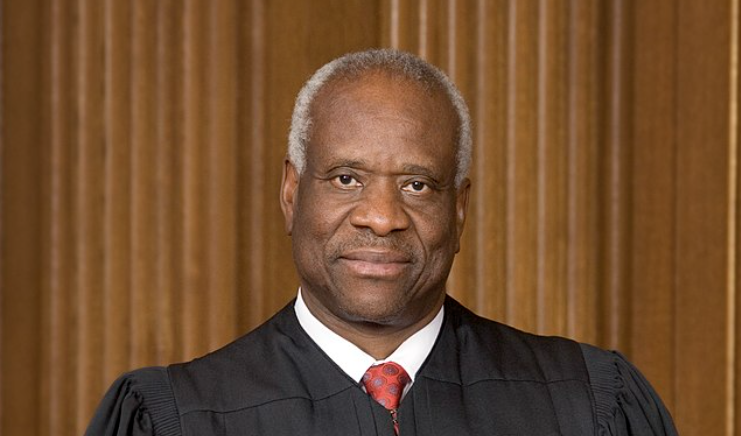
Overview
The Supreme Court recently overturned a federal ban on bump stocks, devices that enable semi-automatic rifles to fire more rapidly. The decision, written by Justice Clarence Thomas, marks a significant limitation on federal agencies’ authority to regulate firearms without congressional approval.
Why It Matters
This ruling underscores the importance of maintaining checks on federal agency powers to protect individual freedoms and uphold constitutional rights.
Who It Impacts
This decision affects American gun owners, policymakers, and regulatory agencies, influencing future interpretations of firearm regulations.
In a landmark decision, the Supreme Court struck down a federal ban on bump stocks, devices that allow semi-automatic rifles to fire at a higher rate. The ruling, authored by Justice Clarence Thomas, was decided by a 6-3 majority, with the court’s conservative justices outvoting the liberal wing led by Justice Sonia Sotomayor.
The ban, which was initially pushed by former President Donald Trump following the tragic 2017 Las Vegas shooting that left 58 people dead, was intended to prevent the use of bump stocks, which convert semi-automatic rifles into rapid-firing weapons. Justice Thomas, however, argued that “a bump stock does not convert a semiautomatic rifle into a machinegun any more than a shooter with a lightning-fast trigger finger does.”
This legal battle began when Texas gun store owner Michael Cargill challenged the ban after he was compelled to surrender two bump stocks he had purchased legally. Cargill sued to retrieve his property, arguing that the reclassification of bump stocks by the Bureau of Alcohol, Tobacco, Firearms and Explosives (ATF) was an overreach of the agency’s authority. Under the federal rule, possession of a bump stock became a crime punishable by up to ten years in prison.
The Supreme Court’s decision brings the gun control debate back into the spotlight, reflecting a broader trend of the court siding with gun rights advocates. In her dissent, Justice Sotomayor expressed grave concerns about the ruling’s potential impact, stating that it “will have deadly consequences” and accusing the majority of “hamstringing the Government’s efforts to keep machineguns from gunmen like the Las Vegas shooter.”
Highlighting her dissatisfaction, Sotomayor took the unusual step of reading her dissent from the bench. She criticized the majority’s technical interpretation, arguing that “a bump-stock-equipped semiautomatic rifle fires ‘automatically more than one shot, without manual reloading, by a single function of the trigger.’ Because I, like Congress, call that a machinegun, I respectfully dissent.”
The challenge against the bump stock ban was indirectly tied to a 1930s gun control law aimed at regulating weapons commonly used by gangsters. This law was amended over the decades, culminating in a 1986 provision that broadly prohibited the transfer or possession of machine guns. The crux of the Supreme Court’s decision hinged on the interpretation of what constitutes a “single function of the trigger.”
The Trump and Biden administrations, along with various gun control groups, argued that the mechanics of bump stocks justified their classification as machine guns under the law. The ATF’s 2018 reclassification led to the ban, which opponents argued was an overstep of regulatory authority. Lower courts had initially upheld the ban, but the conservative-leaning 5th U.S. Circuit Court of Appeals ultimately sided with Cargill, setting the stage for the Supreme Court’s review.
During oral arguments, concerns were raised about the retroactive criminalization of bump stock ownership. Justice Brett Kavanaugh highlighted the risk of Americans being prosecuted for possessing devices that were legal at the time of purchase, emphasizing the potential for ensnaring unaware citizens.
Another central issue was whether Congress, rather than the ATF, should have been the body to approve the ban. This theme of limiting federal agency power has been a recurring subject in recent Supreme Court cases, particularly those involving financial and environmental regulations.
The Supreme Court’s ruling aligns with recent decisions favoring gun rights groups, such as the National Rifle Association. Notably, the court’s conservative majority previously struck down a New York state law that restricted carrying firearms outside the home.
Justice Thomas’ opinion delved into the technical specifics of how bump stocks function, illustrating that they require ongoing manual input to fire multiple shots, unlike true automatic weapons. He argued that the devices do not meet the legal definition of a machine gun, which is defined as firing more than one round per trigger pull without manual reloading.
This ruling is a significant victory for gun rights advocates and a reaffirmation of the necessity for clear legislative action rather than regulatory overreach.




